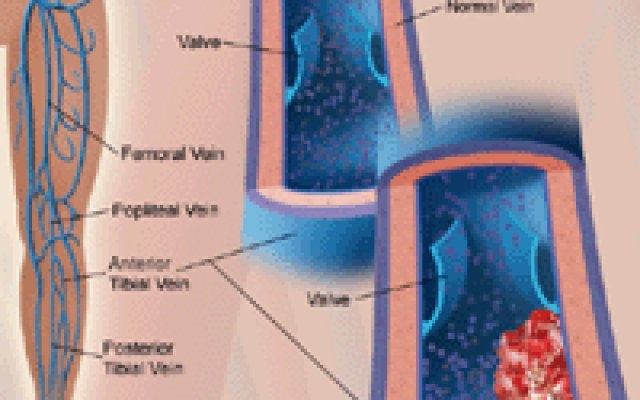5 Warning signs that sitting too long may be causing dangerous blood clots

Sitting for too long slows blood flow through the veins in the arms and legs, increasing the risk of deep vein thrombosis (DVT). This can happen at any age, but after age 40 the risk nearly doubles almost every 10 years.
Deep vein thrombosis
DVT is a medical condition that occurs when a blood clot forms in a deep vein, usually in the leg. According to the Centres for Disease Control and Prevention (CDC), the most serious complication of DVT happens when a part of the clot breaks off and travels through the bloodstream to the lungs, causing a blockage called pulmonary embolism that could potentially damage the lungs.
One-third of people who have a DVT will have long-term complications called post-thrombotic syndrome (PTS). People with PTS have symptoms such as swelling, pain, discolouration, and in severe cases, scaling or ulcers in the affected part of the body. Sometimes, the symptoms can be so severe that a person becomes disabled.
Due to increased estrogen, women may be more at risk of clotting if they take birth control pills or get hormone therapy. The risk is also higher in the first six weeks after having a baby. Besides a sedentary lifestyle and increased estrogen production, other risk factors include a history of obesity, heart disease, and certain surgeries. Knee and hip replacement surgeries, in particular, have a high risk for DVT. This is because clotting is one of the body’s natural ways to heal the damage to the blood vessels from surgery and because patients are often on bed rest to recover from surgery.
Warning signs
The CDC says about half the people who have DVT have no symptoms at all, and not all of the people who do have the same symptoms. Here are the most common signs and symptoms:
Swelling
Pain or tenderness
Increased warmth, cramps, or aching in the area that is swollen or painful, usually the calf or thigh
Red or discoloured skin
A firmness or thickening of the vein called a “cord”
Prevention and treatment
After staying in bed to recover from injury or illness, the CDC recommends moving as soon your doctor says it’s safe. Your doctor might also recommend blood thinners or compression stockings that put pressure on the leg.
If you’re travelling, the CDC says to try to find ways to get up and move every few hours. If you’re driving, pull over and walk around every two to three hours; if you’re on a plane, walk the aisles when you can.
If you have a sedentary lifestyle, the CDC recommends exercising your legs while sitting by:
Raising and lowering your heels while keeping your toes on the floor
Raising and lowering your toes while keeping your heels on the floor
Tightening and releasing your leg muscles
Maintaining a healthy weight and staying active are the most recommended methods to avoid DVT. If you suspect you might have formed a blood clot, talk to your doctor immediately. If your clot is small enough, your doctor may treat your blood clot with medication and stockings; in more severe cases, it may need to be surgically removed.
Source: WomenWorking
Source: Elikem Adiku
Trending News

Dismissed workers: You'll be prioritised for jobs in next NPP gov't - Bawumia
16:30
Gov't opts for resource sovereignty following Damang mine transition- Mahama
14:04
Concerned affiliates of KNUST Male Halls petition President Mahama over ambassadorial nominee
10:57
Gov't moves to revoke Akonta mining lease over creating a 'criminal' illegal mining syndicate
18:20
CJ suspension: Minority accuses Executive of judicial interference
14:59
Health Minister appeals for calm at Tamale Teaching Hospital amid ongoing tensions
13:48
Businesswoman in $13,000 fraud case remanded again
10:25
A/R: Okatakyie Afrifa-Mensah opens borehole project for Agona community
15:06
Our polling station executives and grassroots are our greatest assets - Bawumia
14:41
TVET Coordinator urges parents to support technical education to curb youth unemployment
13:33




